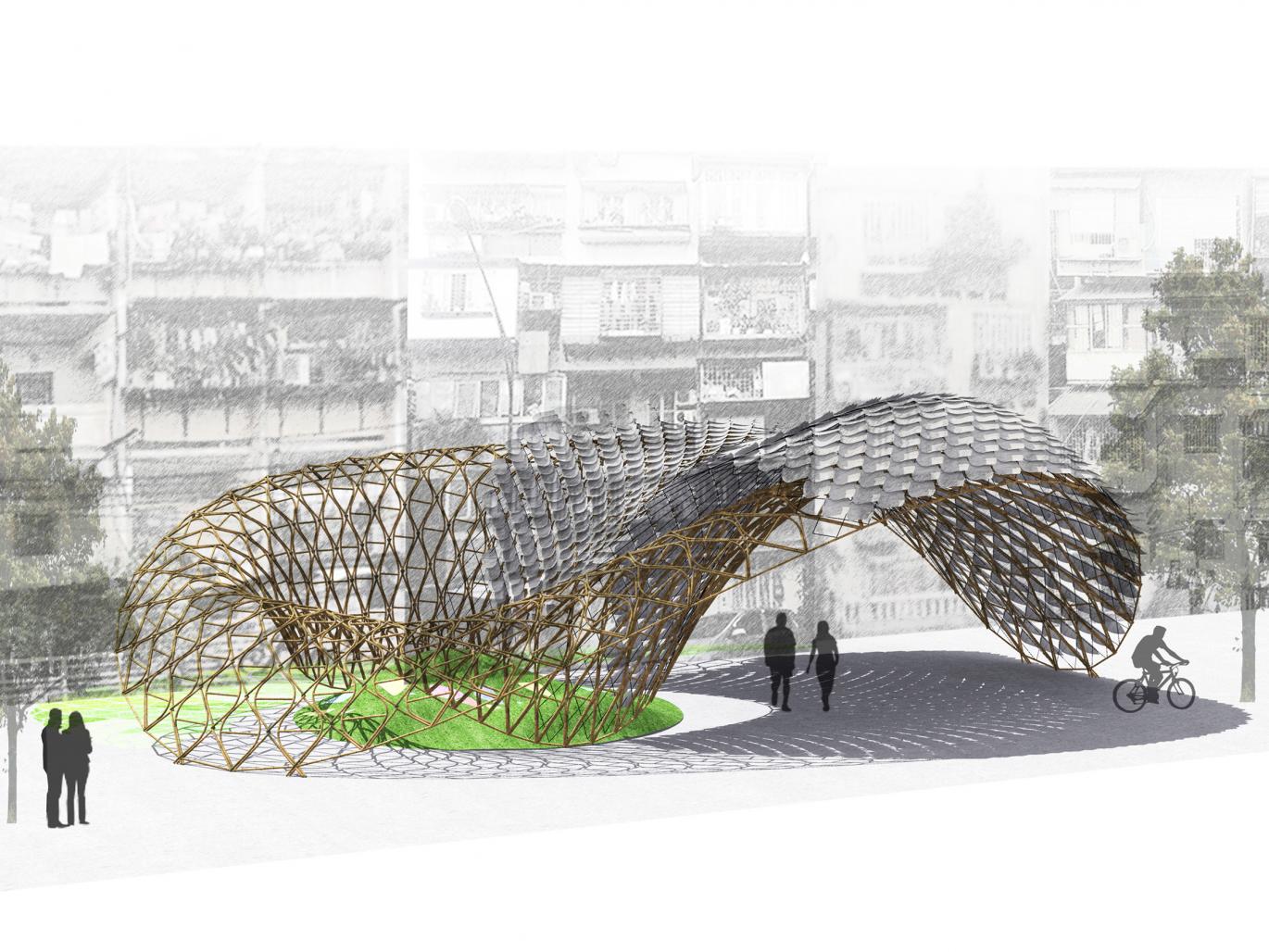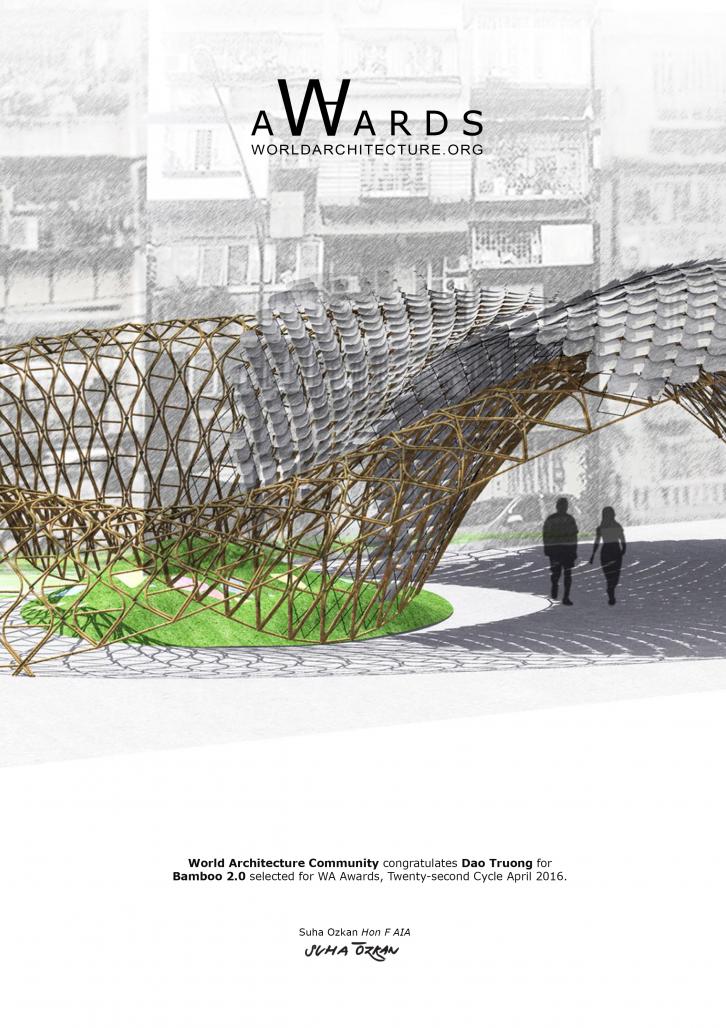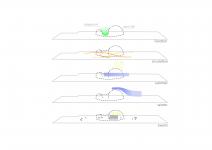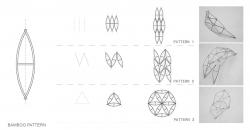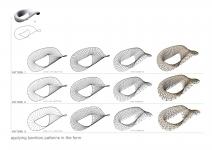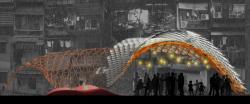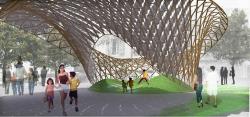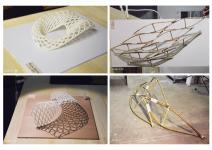This project is studied based on the research on a Vietnamese traditional material as the bamboo. The question is how the development of this material can benefit the design from the support of contemporary digital tools. The concept is the association between the traditional method of bamboo construction and the creation of free- form by using the parametric design.
Working on bamboo gives me an idea to create the structural patterns in bamboo in small size that can be assembled together for the whole structure of pavilion. These patterns are easy to fabricate (even by industrial production) and to transport to the site, which enables to construct at a low cost. The pavilion is simply maintained by replacing damaged elements. In addition, the site located in a region of bamboo construction culture in Vietnam, we can benefit not only by the local material which helps reduce the transportation fees and the environment impacts but also by the local know-how in bamboo.
By studying a public pavilion and applying the research on bamboo in a new program, the project aims to reorganize the space in a common yard in Hanoi in Viet Nam. Nevertheless, the primary problem in this space is the spatial conflict between economic activities and social activities happened in different time. The lack of furniture urban drives this yard to be less useful to inhabitants and to become a forgotten space. For this reason, the strategy of this project is to reorganize and to requalify this space. In terms of architecture design, this project follows the form-finding method in using gravity, which was realized and developed for the first time by Antonio Gaudí, and then Frei Otto, to research an optimal structural form as well as the ambiance qualities in order to adapt to old and new uses of inhabitants.
In brief, Bamboo 2.0 show us how the bamboo overcome the limit of its shape and avail its own ability to bend for creating the structures adapted to the new forms in contemporary architecture. And also the intention of this project is to give inhabitants in the developing countries a family approach to a new type of contemporary architecture: parametric architecture.
2015
2015
The membrane system is also proposed for the cover in controlling the sunlight and wind in the different seasons. In this case, Arduino, an open-source prototyping platform based on easy-to-use hardware and software, is a suggestion in order to regulate the opening of membranes. This’s a technology estimated to be efficacy, inexpensive and easy to use or to install. However, the detail of this system is not going to be demonstrated in this project.
individual project
Bamboo 2.0 by Dao Truong in Vietnam won the WA Award Cycle 22. Please find below the WA Award poster for this project.
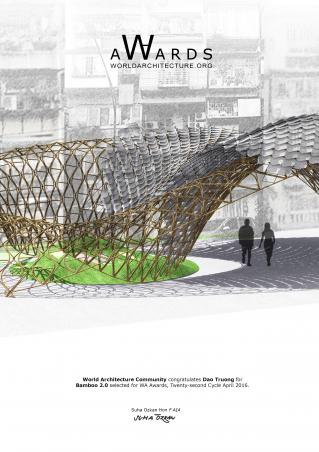
Downloaded 443 times.
Favorited 2 times
